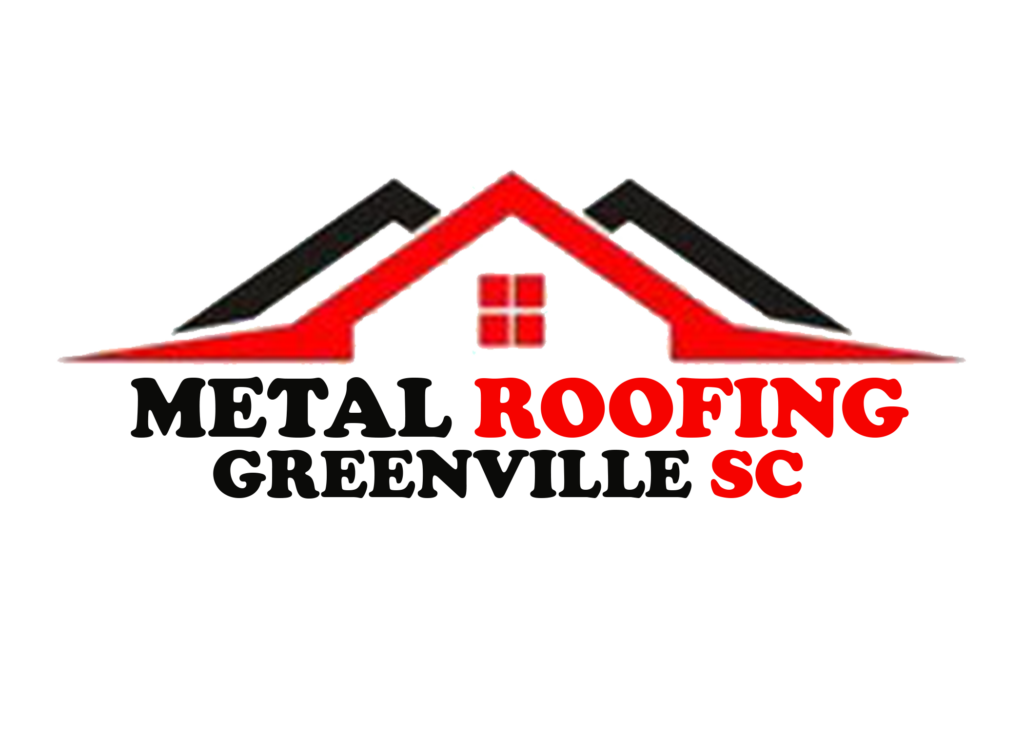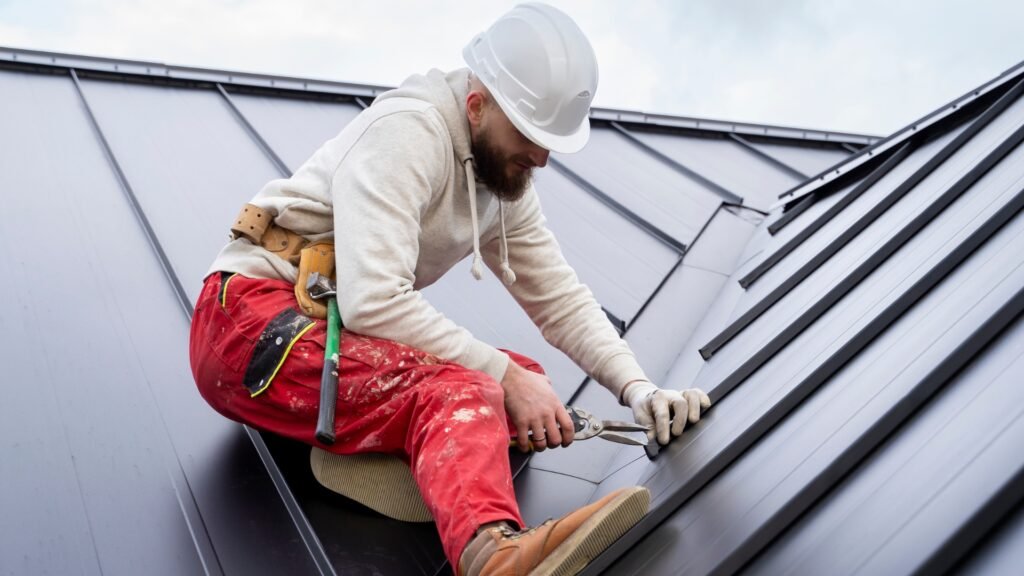Welcome to our guide on installing metal roofing over shingles, a cost-effective and durable solution gaining popularity among homeowners. Discover how this process not only enhances your roof’s longevity and energy efficiency but also adds a modern touch to your home’s exterior. Follow our step-by-step instructions to achieve a seamless transition to metal roofing while maximizing the benefits of your existing structure.
Preparation Steps for Installing Metal Roofing Over Shingles
Before diving into the installation process, thorough preparation is key to ensure a smooth and successful project. Follow these essential steps to get started:
Assessing the Existing Roof Ensure your current roof structure is sound and capable of supporting the additional weight of metal roofing. Inspect the condition of the shingles to identify any repairs or replacements needed before installation.
Gathering Materials Compile a comprehensive list of tools and materials required for the installation, including metal roofing sheets, fasteners, underlayment, and safety equipment. Having everything on hand will streamline the process and prevent delays.
Checking Local Regulations Before beginning any work, check local building codes and regulations regarding roof installations. Obtain any necessary permits to ensure compliance and avoid potential issues down the road.
Measuring and Calculating Accurately measure the dimensions of your roof to determine the quantity of metal roofing materials needed. Calculate overlaps and allowances for trimming to minimize waste and ensure a precise fit during installation.
Ordering Materials Once measurements are finalized, order your metal roofing materials from a reputable supplier. Consider factors such as color, style, and gauge thickness to match your aesthetic preferences and structural requirements.
By meticulously preparing your roof and acquiring the necessary materials, you lay a solid foundation for a successful metal roofing installation over shingles. This proactive approach not only saves time and resources but also ensures a durable and visually appealing roof for years to come.
Planning and Permits for Installing Metal Roofing Over Shingles
Planning and obtaining the necessary permits are crucial steps before embarking on a metal roofing installation project over existing shingles. Follow these guidelines to ensure a smooth process:
Checking Local Regulations Before starting any work, thoroughly research local building codes and regulations pertaining to roof installations. Ensure compliance with requirements for materials, methods, and structural integrity.
Measuring and Calculating Accurately measure your roof’s dimensions to determine the amount of metal roofing materials needed. Consider factors such as pitch, slopes, and overlaps to optimize material usage and achieve a precise fit.
Ordering Materials Once measurements are finalized, order your metal roofing materials from a reputable supplier. Select materials that align with your aesthetic preferences and structural requirements, such as color, style, and gauge thickness.
Obtaining Permits Contact your local building authority to obtain necessary permits for the roof installation. Provide detailed plans and specifications as required to facilitate the approval process and ensure compliance with local regulations.
Professional Consultation Consider consulting with a roofing professional or contractor to review your plans and ensure they meet all regulatory requirements. Their expertise can help identify potential challenges and ensure a successful project outcome.
By meticulously planning and obtaining permits before starting your metal roofing installation, you can navigate regulatory requirements effectively and set the stage for a seamless and compliant project. This proactive approach not only ensures legal compliance but also contributes to the long-term durability and performance of your new roof.
Removing Old Shingles (if Necessary) for Installing Metal Roofing
Removing old shingles is a crucial step when installing metal roofing over existing materials. Follow these optimized steps to ensure a smooth transition:
Assessment and Preparation Before removal, assess the condition of the existing shingles. Identify damaged or deteriorated areas that require immediate attention.
Tools and Techniques Utilize appropriate tools such as shingle removal tools, pry bars, and safety equipment to safely and efficiently remove old shingles. Dispose of old materials responsibly, adhering to local waste disposal regulations.
Surface Preparation After shingle removal, inspect the roof deck for any damage or rot. Make necessary repairs to ensure a stable and secure base for the metal roofing installation.
By carefully removing old shingles and preparing the roof deck, you set the stage for a successful metal roofing installation. This proactive approach ensures structural integrity and enhances the longevity of your new roof.
Installation Process for Metal Roofing Over Shingles
Follow this optimized guide to seamlessly install metal roofing over existing shingles, ensuring durability and efficiency:
Preparation and Safety Begin by ensuring a clean and safe work environment. Gather necessary tools and safety equipment before starting the installation process.
Laying Underlayment Apply an appropriate underlayment to the cleaned roof surface to enhance waterproofing and protect against moisture buildup.
Installing Metal Roofing Panels Start from the bottom edge of the roof and work upwards, overlapping panels according to manufacturer guidelines. Secure panels with appropriate fasteners, ensuring they are evenly spaced and aligned.
Trimming and Fitting Use specialized tools to trim metal panels to size and fit around edges, vents, and chimneys. Ensure precise cuts to maintain the roof’s integrity and aesthetic appeal.
Sealing and Finishing Apply sealant to panel overlaps and around protrusions to prevent water infiltration. Double-check all seals and fastenings for tightness and security.
By following these steps meticulously, you can achieve a professional-grade installation of metal roofing over shingles, enhancing your home’s resilience and curb appeal.
Roofing Details and Accessories for Installing Metal Roofing Over Shingles
Ensure a professional finish and long-lasting performance with these optimized roofing details and accessories:
Trimming and Cutting Utilize precise cutting tools to trim metal panels accurately around edges, vents, and chimneys. Maintain clean lines and secure fits for a seamless appearance.
Flashing and Sealing Apply flashing around roof edges, valleys, and penetrations to prevent water ingress. Seal all seams and joints with durable caulking or sealant to enhance waterproofing.
Ventilation and Insulation Install proper ventilation systems to regulate attic temperature and moisture levels. Enhance insulation for energy efficiency and comfort throughout the seasons.
Maintenance Tips Regularly inspect and maintain your metal roof to prolong its lifespan. Clear debris, check seals, and address any issues promptly to prevent costly repairs.
By integrating these roofing details and accessories into your installation process, you ensure a robust and weather-resistant metal roofing system over existing shingles, optimizing your home’s protection and efficiency.
Safety Measures and Tips for Installing Metal Roofing Over Shingles
Prioritize safety with these optimized measures and tips for a secure metal roofing installation:
Safety Guidelines Follow strict safety protocols when working at heights. Use sturdy ladders, harnesses, and non-slip footwear to prevent accidents.
Handling Tools and Materials Ensure proper handling of tools and materials to avoid injuries. Keep tools organized and maintain a clutter-free workspace.
Weather Considerations Monitor weather forecasts and avoid installation during inclement weather conditions. Secure materials and cover exposed areas if unexpected weather arises.
Quality Assurance Regularly inspect materials and workmanship throughout the installation process. Address any issues promptly to maintain high-quality standards.
Professional Consultation Seek advice from roofing professionals for complex installations or if unsure about procedures. Their expertise can ensure compliance with safety standards and optimize installation efficiency.
By adhering to these safety measures and tips, you can ensure a safe and successful metal roofing installation over shingles, enhancing your home’s durability and protection.
Maintenance and Longevity of Metal Roofing Over Shingles
Ensure your metal roofing remains durable and attractive with these optimized maintenance tips:
Routine Inspections Regularly inspect your metal roof for signs of wear, such as loose panels or rust spots. Address issues promptly to prevent further damage.
Cleaning Practices Remove debris and clean your roof annually to prevent buildup that can trap moisture and cause corrosion. Use gentle methods to avoid damaging the metal finish.
Coating and Protection Consider applying protective coatings to enhance durability and extend the lifespan of your metal roof. Consult with professionals for suitable products and application methods.
Weather Resilience Monitor your roof’s performance during extreme weather events. Inspect for damage afterward and make necessary repairs to maintain structural integrity.
Energy Efficiency Explore options for enhancing energy efficiency, such as reflective coatings or insulation upgrades. These improvements can lower heating and cooling costs over time.
Professional Maintenance Engage roofing professionals for comprehensive inspections and maintenance tasks. Their expertise ensures thorough assessments and proactive solutions.
Long-Term Benefits Investing in regular maintenance pays off with prolonged roof lifespan and reduced repair costs. Enjoy peace of mind knowing your home is well-protected with a well-maintained metal roof.
By following these maintenance guidelines, you can optimize the longevity and performance of your metal roofing installed over shingles, ensuring lasting durability and aesthetic appeal for your home.
Cost Considerations for Installing Metal Roofing Over Shingles
Budgeting for Installation Plan your budget carefully, considering factors such as material costs, labor expenses, and any additional supplies needed for the installation process.
Average Costs Understand the typical cost range for installing metal roofing over shingles. Prices may vary based on roof size, material quality, and regional labor rates.
Savings and ROI Calculate potential savings over time with energy-efficient metal roofing. Consider the long-term benefits, including reduced maintenance and utility costs.
Comparative Analysis Compare costs with alternative roofing materials to determine the cost-effectiveness of metal roofing over shingles. Factor in durability and lifespan for a comprehensive analysis.
Financing Options Explore financing options available for roof installations, such as home improvement loans or financing plans offered by roofing contractors.
DIY vs. Professional Installation Evaluate the pros and cons of DIY installation versus hiring professional roofers. Factor in your skill level, time availability, and the complexity of the project.
Insurance Considerations Check with your insurance provider to understand coverage options for metal roofing installations. Some policies may offer discounts for durable roofing materials.
Choosing a Contractor Select a reputable contractor with experience in metal roofing installations. Obtain multiple quotes and review customer testimonials to ensure quality workmanship.
By considering these cost considerations and making informed decisions, you can maximize the value and benefits of installing metal roofing over shingles for your home.
Conclusion: Installing Metal Roofing Over Shingles
In conclusion, installing metal roofing over existing shingles offers numerous benefits, including enhanced durability, energy efficiency, and aesthetic appeal for your home. By following the comprehensive steps outlined in this guide, you can achieve a seamless transition to a robust metal roof that withstands the elements and adds value to your property.


